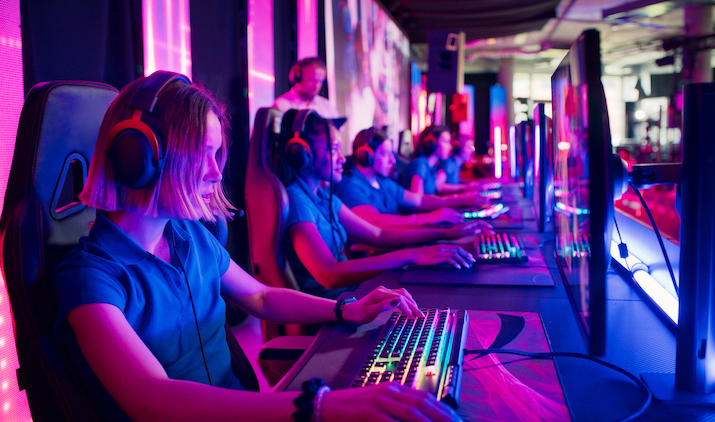Capitalising on fan engagement: Appear reveals the key to unlocking profitability as sports rights valuations continue to rise

In summer 2023 Appear announced it was to support Riot Games as a key workflow contributor within its global remote broadcast centres
By Thomas Bostrøm Jørgensen, Appear chief executive officer.
Sports rights are becoming increasingly expensive, with global rights projected to reach $60 billion in 2024. Notably, the NFL’s domestic rights deals for 2023-33 with major broadcasters are valued at over $110 billion [SportBusiness: Global Media Report], with Prime Video paying $100 million for a single game on Black Friday this year.
This trend is global, as evidenced by the Indian Premier League (IPL) cricket rights now surpassing the English Premier League and trailing only behind the NFL.
Live premium sports are unmatched in their ability to draw viewers, more so than any other content genre. And with the Olympics coming up, and the streaming giants looking increasingly to sports to boost viewership and their subscriber-base, it’s likely that ‘peak value’ for sports rights is some years away.
What does this mean for media technology vendors? It’s clear that broadcasters need total reliability, if you’re broadcasting tier 1 sports and your average total cost per event, including rights, production and connectivity costs, is in the millions, then you need to ensure that your coverage is robust and fault-free.
Sports fans also expect the ultimate in picture quality; if fans want to watch their favourite sport in UHD, broadcasters need to be able to deliver it flawlessly, and at low latency, especially for applications such as live betting.
Today sports fans globally expect robust and high-quality video, they won’t put up with less, and they increasingly want so much more, including to feel as close to the action and the athletes as possible. Imagine that you’re a motorsport fan at the track. You probably have a favourite driver, and you’d like to see what’s happening to him or her when they’re out of sight. Appear has been involved in a trial to make different camera angles available on mobile for fans at the track.
Striking a balance
It can be just the same watching TV at home. If your favourite driver isn’t vying for the lead, you may not see him or her for several laps. So, broadcasters are increasingly making personalised camera feeds available to the TV viewer, either as separate TV feeds, or through over the top (OTT) streams or graphic overlays seamlessly available on connected TV or mobile devices. For the rightsholder, such advanced offerings can lengthen fan viewer duration, a key monetisation metric, particularly if advertising is an important revenue source.
This leads to the broadcaster facing a challenge: rights are increasing in value, but they need to launch new more complex services, while at the same time attempting to minimise their variable costs. Once rights are purchased this cost is fixed for several years, but the number of cameras at a sports event continues to rise. For example, there are many sports which at the highest level routinely have more than 100 cameras at the track, court, pitch, or course.
So what options are open to broadcasters in their attempt to minimise variable costs? One option that will become increasingly important is to use the public internet for the contribution of live video from the studio to the network centre. The deployment of protocols such as SRT and RIST enables companies like Appear to develop high-capacity solutions that enable sports video to be distributed robustly and at high-quality and low-latency over the internet.
I’m sure that the Super Bowl will continue to be contributed over managed networks for many years, however we will see higher and higher value content being transported over the public internet, enabling media and entertainment organisations to align video transport costs with content value.
Important solutions
Remote production techniques are also an important solution, not only reducing expenses but facilitating broader video offerings crucial for heightened engagement and monetisation. Simultaneously, these techniques play a pivotal role in advancing sustainability goals, aligning with broadcasters’ aspirations for zero emissions.
As the landscape of sports rights escalates in value, the imperative for robust fan engagement becomes ever more pronounced. The inherent value lies in the unmatched ability of live premium sports to captivate audiences, a fact that streaming giants and traditional broadcasters are keenly aware of.
For companies specialising in media technology solutions, the implications are clear. The pursuit of flawless coverage becomes not just a priority but a necessity. The contemporary sports fan demands nothing short of impeccable quality and immersive experiences. Whether it’s offering personalised camera feeds for motorsport enthusiasts or leveraging innovations like SRT and RIST to transport high-value content over the public internet, the trajectory is clear: drive monetisation through super-serving fans, while navigating costs.
The future of sports broadcasting is entwined with technology, innovation and a resolute commitment to both quality and financial efficiency. As the value of sports rights skyrockets, the ability to strike a delicate balance between delivering superior content services and managing costs will define what it is to be successful in this dynamic landscape.

